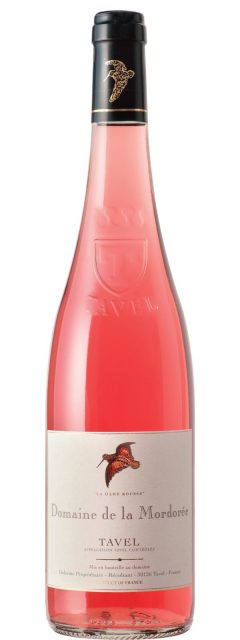Rosé wines are perfect for warm weather meals—and for sipping on their own. With juicy, fresh fruit flavors, moderate alcohol and virtually no drying tannins, they are refreshing and easy to drink. And most rosé wines are great when served cold.
Pink wines come in many styles, from most every wine-making country and can be made from dozens of different varieties. They offer a great way to cool down, tantalize your taste buds, and explore the world of wine all at the same time. Here's a look at three very different rosé wines and from France.
No region is more associated with rosé wine than Tavel
 Located in the southern Rhone Valley, just across the river from Avignon, the Tavel AOC produces nothing but rosé. The process used there is unique, and there is plenty of diversity due to differences in soil and blend.
Located in the southern Rhone Valley, just across the river from Avignon, the Tavel AOC produces nothing but rosé. The process used there is unique, and there is plenty of diversity due to differences in soil and blend.
Tavel wines are required to use Grenache Noir as the core variety, but must include other grapes too. Syrah, Mourvedre, Cinsault, Carignan, Calitor Noir and Clairette Noir are the red varieties at winemakers’ disposal. But white grapes, such as Grenache Blanc, Clairette Blanc and Picpoul, are fair game too.
In France, it’s not legal to make non-sparkling rosé by blending red wine and white wine. But it’s okay to use white grapes in rosé if their juice is fermented together with juice from red wine grapes. That’s exactly what they do in Tavel. Tavel producers are also required to include juice from red wine grapes that has spent at least twelve hours on the skins. This creates a richly colored and flavorful wine with rich mouthfeel.
2015 Mordoree Domaine de la Tavel Rosé Dame Rousse Les Vestides
40-year old vines contributed to this six-variety blend. The mix of 60% Grenache, 10% Cinsault, 10% Syrah, 10% Mourvèdre, 5% Clairette, 5% Bourboulenc deliver plenty of fruit flavor, but also minerality. It will gain complexity with up to five years of bottle aging. Try it with light meat and seafood dishes.
The Cotes du Rhone AOC
This huge AOC covers much of the southern Rhone Valley and some parts of the northern Rhone too. As with red wines of the area, Cotes du Rhone rosé wines are Grenache-centric. That variety must make up at least 40% of each rosé. The rest can come from the range of southern Rhone grapes and up to 20% of the volume can even be white.
The winemaking style is often Saignée. After macerating on the skins for a short while, a portion of the juice from red wine grapes is bled off to ferment into rosé. Remaining juice is fermented with the grape solids to produce deeply colored red wine.
2016 Guigal Cotes du Rhone Rosé
This is a classic blend of 70% Grenache, 20% Cinsault and 10% Syrah with an average vine age of 25 years.The grapes were fermented in stainless steel to create a pure, fresh wine. Enjoy it with appetizers, grilled seafood and poultry.

Best known for red wine dominated by Mourvedre, Bandol makes a lot of rosé too. As with the reds, at least 50% of each rosé wine must be Mourvedre. The balance comes from Grenache, Cinsault, Syrah and Carignane.
Unlike Tavel, the rosé wines of Bandol must be made using the direct press process. Grapes are picked specifically for rosé and pressed immediately after harvest. The juice doesn’t spend any time on the skins, so the wine is pale in color light on the palate.
2014 Domaines Ott Bandol Rosé Chateau Romassan
The blend here is 56% Mourvèdre, 21% Cinsault, 21% Grenache, 2% Syrah. Fermentation was in cooled stainless steel. Flavors of peach and tropical fruit with a mineral edge float on vibrant acidity. It’s perfect for light fish or a bowl of mussels.
JJ Buckley guest blogger Fred Swan is a San Francisco-based wine writer, educator, and authority on California wines and wineries. His writing has appeared in The Tasting Panel and SOMM Journal. Online, he writes for his own site, FredSwan.Wine (formerly NorCalWine), PlanetGrape, and GuildSomm. He teaches at the San Francisco Wine School. Fred’s certifications include WSET Diploma, Certified Sommelier, California Wine Appellation Specialist, Certified Specialist of Wine, French Wine Scholar, Italian Wine Professional, Napa Valley Wine Educator and Level 3 WSET Educator. In 2009, he was awarded a fellowship by the Symposium for Professional Wine Writers. In that same year, he was inducted into the Eschansonnerie des Papes, the honorary society of the Chateauneuf-du-Pape AOC.